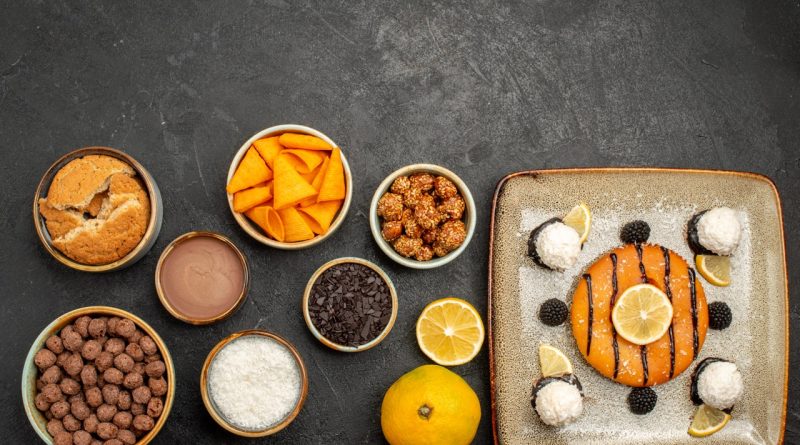The Different Types of Measuring Spoons and Their Uses
Measuring spoons are indispensable tools in the kitchen, ensuring precision in cooking and baking. Their primary function is to provide consistent measurements of both dry and liquid ingredients, facilitating successful recipes and culinary experiments. With various types and designs available, understanding the nuances of measuring spoons can significantly enhance your cooking experience. This article explores the different types of measuring spoons, their applications, and tips for selecting the most suitable ones for your culinary needs.
Understanding Measuring Spoons: A Comprehensive Overview
Measuring spoons are typically made from materials such as stainless steel, plastic, or silicone, each offering unique benefits. Stainless steel spoons are durable and often have engraved measurement markings that do not wear off over time. Plastic measuring spoons, on the other hand, are lightweight and often come in vibrant colors, making them visually appealing but potentially less durable. Silicone spoons provide flexibility in measurement and are easy to clean, but they may not offer the same level of accuracy when it comes to precise measurements.
Measurements in measuring spoons can vary, although standard sizes include 1 tablespoon, 1 teaspoon, 1/2 teaspoon, and 1/4 teaspoon. Some sets may also include larger or smaller measurements, such as 1/8 teaspoon or 2 tablespoons. Understanding these sizes is crucial, as even small discrepancies in measurement can lead to significant variations in the final dish. Additionally, some measuring spoons come with nested designs for easy storage, while others may feature a detachable ring for convenient use.
Furthermore, measuring spoons can be classified into two categories: standard and metric. Standard measuring spoons predominantly use the US customary system, while metric spoons provide measurements in milliliters. For international recipes or when working with ingredients that require precise measurements, opting for metric measuring spoons may be beneficial. Familiarity with these differences will help home cooks navigate recipes more effectively, ensuring successful outcomes in their culinary endeavors.
Common Types of Measuring Spoons and Their Characteristics
The most common type of measuring spoon is the standard stainless steel set, which typically includes a tablespoon and various teaspoon sizes. These spoons are known for their longevity and resistance to wear and tear. Stainless steel measuring spoons often feature a handle designed for a comfortable grip and may have a rounded or elongated shape to facilitate easy scooping and pouring.
Plastic measuring spoons are another popular choice, especially among casual cooks. They are often colorful and lightweight, making them easy to handle. However, unlike stainless steel, plastic spoons may absorb odors and stains from certain ingredients over time. Additionally, the markings for measurements may fade with frequent use, potentially leading to inaccuracies in cooking.
Silicone measuring spoons offer flexibility and are often designed for easy pouring, particularly when dealing with sticky substances like honey or molasses. The soft material allows for easy cleaning and can bend to reach into jars or containers. However, silicone spoons may not provide the same level of precision as their metal or plastic counterparts. Each type of measuring spoon serves different needs, making it essential to understand their characteristics to select the most appropriate ones for specific tasks.
Practical Applications: When to Use Each Type of Spoon
When following a standard recipe, stainless steel measuring spoons are generally the preferred choice due to their durability and accuracy. They are particularly effective for dry ingredients like flour, sugar, and spices, where precise measurements are critical to achieving the desired flavor and texture. Additionally, their sturdiness makes them suitable for scooping thicker substances, such as peanut butter, without bending or breaking.
Plastic measuring spoons excel in casual cooking settings or when working with small children who are learning to cook. Their lightweight nature makes them easy for young cooks to handle, reducing the likelihood of accidents in the kitchen. While they may not provide the same level of precision as stainless steel, they are adequate for straightforward recipes and can be used for measuring both dry and liquid ingredients.
Silicone measuring spoons are particularly effective for sticky or viscous ingredients. Their flexibility allows for easy scraping of contents, ensuring that nothing goes to waste. Moreover, they can be used to measure both hot and cold liquids, making them versatile tools for various cooking applications. When working with recipes that require precise measurements, particularly involving liquids or sticky ingredients, silicone spoons can provide an added advantage due to their design.
Tips for Choosing the Right Measuring Spoons for Cooking
Choosing the right measuring spoons requires considering the types of cooking you do most frequently. For home bakers, investing in a high-quality stainless steel set with clearly marked measurements will likely yield the best results. These spoons can withstand rigorous use and maintain their accuracy, ensuring consistent baking outcomes every time.
If you often cook with children or want a more colorful kitchen tool, consider a plastic set. Look for BPA-free materials to ensure safety, and check that the measurement markings are clearly visible and resistant to fading. While they may not last as long as metal spoons, they can still be effective for most home cooking needs, especially for simpler recipes.
For those who often deal with sticky substances or require flexibility in their measuring tools, silicone spoons are an excellent choice. Look for sets that are easy to clean and can withstand both hot and cold temperatures. Ultimately, the best measuring spoons for your kitchen will depend on your cooking style, ingredient preferences, and the level of precision required for your recipes.
In conclusion, understanding the different types of measuring spoons available is essential for any cook, whether a novice or an experienced chef. Each type has its unique advantages and applications, from stainless steel for durability to silicone for flexibility. By selecting the right measuring spoons for your cooking needs, you can ensure accuracy in your recipes and elevate your culinary skills. Investing in a versatile set of measuring spoons will not only make your cooking more efficient but also enhance your overall kitchen experience.
